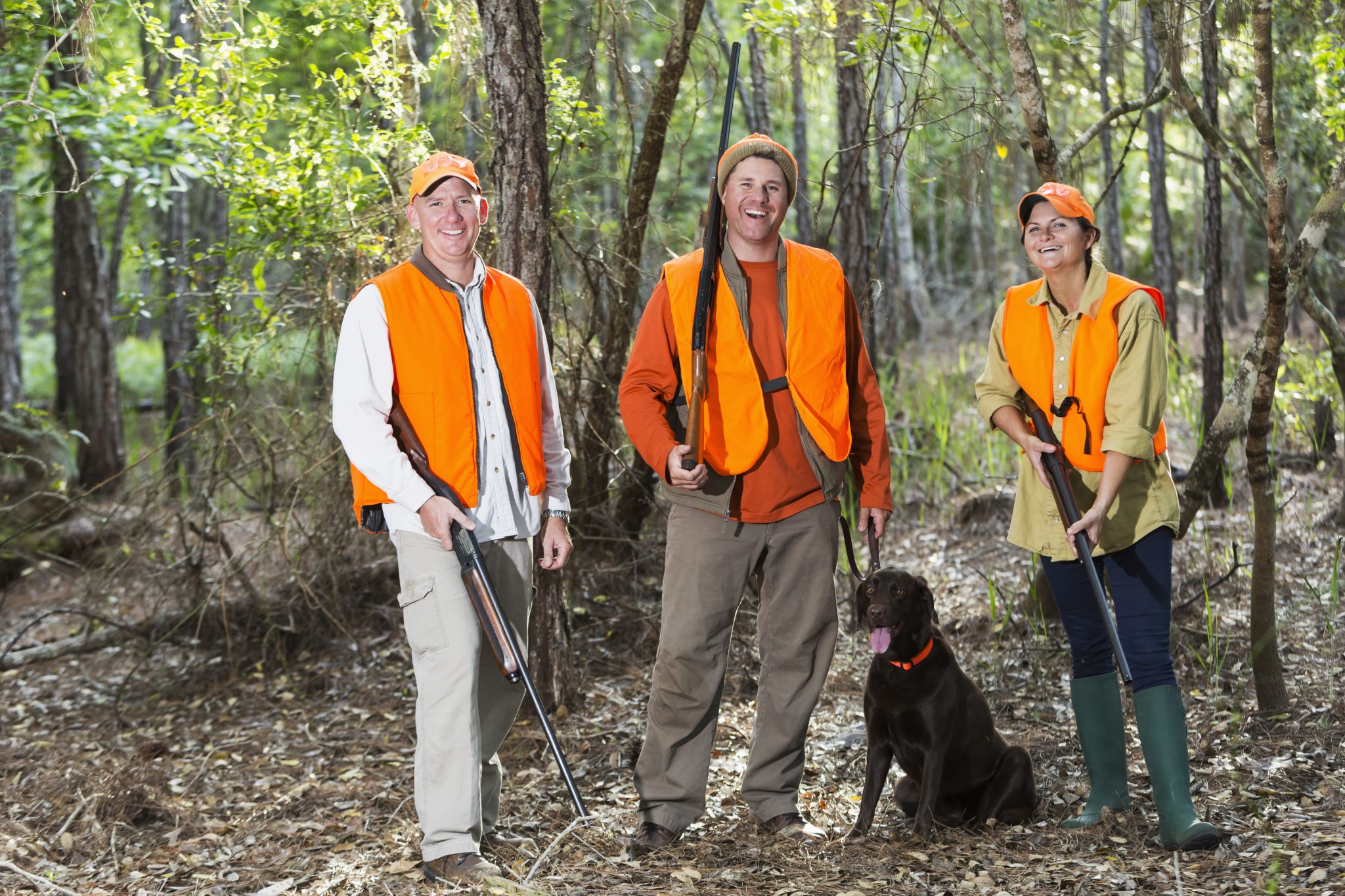Forestry & Wildlife

Formation and membership of hunting clubs in Alabama and the Southeast have been popular for decades. After all, hunting clubs offer their members advantages not often available to independent hunters.
Clubs offer the ability to hunt large acreages for fees. This has advantages over the cost of owning land. Clubs also offer hunting with controlled or limited access and hunting pressure as well as quality experiences through self-imposed regulations. Many clubs actively manage and improve wildlife habitat through activities such as improving forest stands and planting food plots, while also sharing the related effort and expenses. These advantages along with an increased sense of safety, security, camaraderie, and friendship among hunters make it easy to see why hunting clubs remain popular.
The longevity and success of a hunting club often depend on how it is organized and governed. Establishing and following a constitution (provisions that govern the club) that includes a set of bylaws (specific rules and regulations to follow while in the club) help ensure consistent, efficient, fair, honest, and successful operation and continuation of a club. The following suggestions apply to almost any size hunting club. Taking the time and forethought to draft a constitution and bylaws creates a clear communication of how the club operates and the expectations of its members. This also helps attract and maintain members and transition new members into the club while also helping the club to run smoothly. Many arguments, hard feelings, and disbanding of not just hunting clubs but all types of organizations have occurred because of a lack of a proper constitution and bylaws.
The constitution of a hunting club should include provisions for the name, objectives, membership, officers, board of directors, meetings of the club, finances, amendments, and bylaws.
Name
Select a name that will identify the club and distinguish it from all other clubs in the county or state. Also, consider a name that gives insight to the club’s location and focus. This can be useful in attracting members. Including characteristics such as archery only, family oriented, or species focus (deer, turkey, quail, waterfowl, etc.) is good to incorporate in a name. A logo can be developed with these same attributes. Signs with the club name and logo can be posted along property lines and entrances, and vehicle decals can be made to help distinguish members on club property as opposed to those who do not belong.
Example: The name of this club shall be The Silver Creek Archers Quality Deer Club.
Objectives
Clearly state the club’s objectives in the constitution. Example:
- To create, foster, and promote the ideals of outdoor sportsmanship and to actively manage, protect, conserve, and hunt white-tailed deer and eastern wild turkey.
- To cooperate with all local, state, and federal agencies dedicated to the welfare and regulation of these and other wildlife resources. Failure to do so will result in immediate termination of club membership with complete forfeit and no refund of any and all processed dues.
Membership
 This section should clearly state membership capacity, eligibility requirements for membership, and how members will be brought into the club. Example:
This section should clearly state membership capacity, eligibility requirements for membership, and how members will be brought into the club. Example:
- Any licensed hunter who meets the club requirements (each club should specify its own requirements, preferences, and goals) set forth by this club shall be eligible for membership.
- Members shall be selected by a majority vote of the board of directors.
- Any child under legal age whose parents or guardians are members in good standing shall be an associate member without voting privileges and without payment of dues until reaching the age of 16.
- All dues must be paid on an annual basis by June 1 to the secretary-treasurer. Failure to pay will result in forfeiture of membership and may result in replacement by potential or wait-listed members. Upon membership availability, wait-listed members will be contacted in the order they were received and will be given 14 days to confirm current interest in membership and remit payment.
Officers and Board of Directors
In the constitution, include a description of the number and titles of officers in the club, the length of their terms, their duties and responsibilities, and how and when they are to be elected. The composition and powers of the board of directors should also be described in the constitution. Example:
- The officers of this organization shall be: president, vice- president, secretary-treasurer, and three directors.
- The board of directors shall be comprised of all elected officers.
- Each officer will serve for a period of one year following a majority election during the May meeting.
- No individual shall chair the same position for more than three consecutive years.
- Two-thirds of the members of the board of directors shall constitute a quorum for business transactions.
- The powers of this club, expressed or implied, shall be vested in the board of directors: (1) It shall constitute the executive body of this club and its action may be final, subject only to review by the membership and (2) It shall have general management control of the business property and funds of the club.
Meetings
State in the constitution when and how often club meetings will be held. Example:
- The club shall hold its meetings on the second Tuesday of each quarter.
- Two-thirds of the directors and one-half of the additional members shall constitute a quorum at regular meetings. Members must attend a minimum of three annual meetings.
- Members will be required to attend a minimum of three scheduled workdays (often maintenance activities for stands or blinds, roads, camps, food plots, invasive species control, prescribed fire, etc.) or pay a penalty of $X for each missed workday.
Finances
Clearly specify matters regarding dues, the fiscal year, and the handling of finances. Example:
- Membership dues shall be set by the board of directors and are payable by June 1 of each year.
- The fiscal year of the club will begin on June 1 and end on May 31.
- The secretary-treasurer shall make a full accounting of the club’s finances as often as directed by the board of directors. A statement shall be prepared in acceptable accounting form and showing receipts, disbursements, and balance of funds.
- The books and records of the secretary-treasurer shall be open to inspection at any time by members of the club.
- Checks for all disbursements of the club shall be signed by the secretary-treasurer and countersigned by the president.
Amendments
Allow a provision for amendments to the constitution. Example:
- This constitution may be amended at any regular meeting by a two-thirds affirmative vote of the members present.
Bylaws
Bylaws should govern the day-to-day operation of the club. Adapt the bylaws to local conditions that affect the club, its relationships with landowners, and its use of wildlife resources. Avoid overly burdensome bylaws. Newly formed clubs often create too many bylaws and are unable to enforce them. Select bylaws that are basic to the club’s operation. Add others as needed when the club grows or changes. Consider the following concerns when writing bylaws:
- Safety (check-in/check-out, personal protective equipment, tree stands, firearms, alcohol, etc.)
- Guest regulations (frequency, duration, permitted harvest, etc.)
- Land management (habitat and land improvement and maintenance)
- Disciplinary procedures (verbal, financial, membership revocation, etc.)
- Specific hunting regulations (bag limits, species hunted, antler restrictions, age restrictions, scouting procedures, horses, trucks and ATVS, etc.)
- Operational committees (dogs, clubhouse, camping, firewood, food, safety)
- Landowner relationships (landowner restrictions and requests outlined in lease agreement)
- Liability release waiver (drafted by a qualified attorney)
Other Opportunities
Hunting club Insurance is highly recommended as a liability policy can protect the club and its members. Coverage options and costs should be evaluated so they can included in dues before forming the club or before annual dues are set. In addition, having insurance information and liability waivers in hand can also help when acquiring lands to be included in the club as it reflects responsibility and eases landowner reservations due to liability and risk. Also, it is not uncommon for the landowner to require hunting lease liability insurance as part of the lease agreement.
Throughout the life of a hunting club, there is always potential to develop and grow hunting cooperatives among neighboring landowners and clubs. Having surrounding lands working together toward a common goal (often quality habitat, healthy wildlife, and exceptional hunting experiences) in a hunting cooperative only adds to the value, success, and attractiveness of a club. Maps that accurately display and describe boundaries are also helpful to include with the constitution and bylaws. These can easily be acquired as most county tax assessor plat maps can be found online. In addition to the above parameters, large clubs or tracts of lands may also benefit from assembling subcommittees and directors for things such as: food plots, road maintenance, habitat management, stand locations and maintenance, maps/signs/boundaries, conflict resolutions/enforcement, etc.
A Club Built to Last
Whether beginning a new club or improving an existing one, the time and effort put into formally assembling and organizing club provisions and regulations is well worth it. Many online resources provide templates for hunting club constitutions and bylaws. With a well-outlined and thought-out constitution and bylaws in place, communication is clear and easy, conflicts are few, and the result is a club with quality members and with little turnover and many enjoyable hunting experiences.
Download a PDF of Organizing a Hunting Club, ANR-0537.


